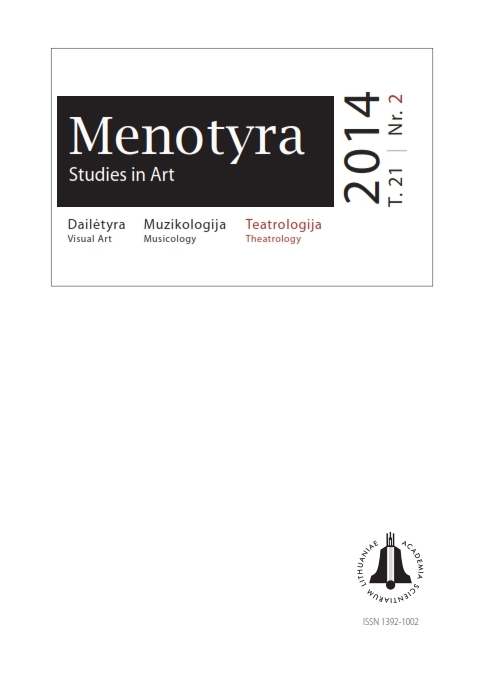Postmodernizmas ir XX a. pabaigos Lietuvos choreografija
Postmodernism and Lithuanian choreography of the end of the 20th century
Author(s): Helmutas ŠabasevičiusSubject(s): Theatre, Dance, Performing Arts, Fine Arts / Performing Arts, Recent History (1900 till today)
Published by: Lietuvos mokslų akademijos leidykla
Keywords: modernism; postmodernism; ballet; choreography; dance; contemporary dances
Summary/Abstract: Theatrical dance is the youngest phenomenon of Lithuanian theatre culture. Although it has been considered an integral part of the processes of Lithuanian theatre, some distinctive features could be found in its development connected with its historical and cultural context - first of all, with a strong link with the tradition of classical ballet and a small number of artists failing to produce a more intense exchange of artistic ideas and creative competition. Some postmodern features could be traced in the productions of Vytautas Brazdylis’ contemporary ballet “Baltaragis Mill” (1979), based on the music of Viatchesav Ganelin written to the feature musical film “The Devil’s Bride” directed by Arūnas Žebriūnas. The most productive choreographers of the end of the 20th century - Jurjus Smoriginas and Anželika Cholina – developed choreographic and directorial language which is still connected with modern tradition, but employed some principles characteristic of postmodern culture: fragmented compositions, eclecticism of choreographic language, importance of visual effects, in some cases – gender issues, although not very clearly defined. It means that it is more reasonable to talk not about postmodern Lithuanian choreography but about some specific features of postmodernism, which are usually used in an intuitive way trying to respond to the contemporary cultural context. The new generation of choreographers which uses the principles of postmodern creativity was formed only in the first decade of the 21st cen- tury, and it should be associated with the only professional contemporary dance theatre “Aura” operating in Kaunas, its “International Modern Dance Festival” organised since 1989, and the Festival “New Baltic Dance”, which was established in 1997. The choreographers belonging to this context are using postmodern principles in a more integrated and consistent way, particularly with regard to non-traditional spaces, audio-visual performance elements, cooperation with well-known musicians, set designers and media artists and performers with the actor-dancer-performance artist qualifications and new relationship between the artist and the audience.
Journal: Menotyra
- Issue Year: 21/2014
- Issue No: 2
- Page Range: 166-178
- Page Count: 13
- Language: Lithuanian

